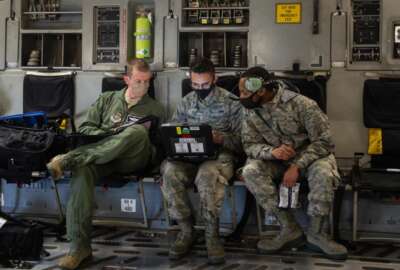
DoD wants to pay more attention to weapon sustainment, seeing successes in new acquisition polices
Pentagon says its putting a greater emphasis on the sustainment of weapons systems — a part of the lifecycle that accounts for 70% of the cost of a weapon.
Over the last couple years, the Defense Department worked on overhauling its main guidelines for how it buys weapons and goods. With that process mostly finished, the Pentagon is now expanding the use of the new policies and adding new ones to account for new challenges.
DoD says its putting a greater emphasis on the sustainment of weapons systems — a part of the lifecycle that accounts for 70% of the cost of a weapon. The department is in the process of developing a new instruction that will lay the foundation for planning and managing product support in each of the Pentagon’s Adaptive Acquisition Framework routes, according to Stacy Cummings, who is performing the duties of defense undersecretary for acquisition and sustainment.
The Adaptive Acquisition Framework is a guidance that outlines six pathways tailored for buying different kinds of products like software or major weapons systems as part of the overhaul of the 5000 series that DoD released piecemeal over the last couple years.
“We want to be able to maximize availability and reliability of the system, as well as maintainability,” Cummings said during the National Defense Industrial Association SOFIC Conference this week. “All of those sustainment requirements are baked in very early in the design of a material solution. In order to deliver long term operational availability and better support warfighting requirements, we need to be looking at sustainability as early in the lifecycle as possible.”
The instruction will help program teams build sustainability into a system regardless of its pathway.
Along those lines, DoD is also taking into account how climate change will affect its future weapons.
“We also want to transition from reactive maintenance to proactive or predictive maintenance,” Cummings said. “We want to understand how different changes in the environment are going to impact our acquisition systems. And again, we want to build that in from the beginning of a program. How is climate change going to impact our ability to be effective in the work in a warfighting capability from an extreme or an adverse weather condition? We need to be designing our weapon systems to be able to operate, whether it’s extreme weather, or whether it’s a change in the market conditions that are driven by climate adaptation or by the desire to reduce greenhouse gases across the across the country.”
Cummings said much how the automotive industry is moving away from combustible engines, DoD needs to move toward technologies that will not mire it in future climates. She said DoD is now considering how it will use climate change data to inform buying and development decisions.
Richard Kidd, deputy assistant defense secretary for environment and energy resilience, told Congress Wednesday that DoD is responding to the Biden executive order to ensure a capable and ready force in the face of climate change.
Outside of sustainment, DoD is starting to make progress on the use of the six acquisition pathways. The department has increased its use of mid-tier acquisition — a short-term procurement process used to develop prototypes and increase innovation.
DoD has 74 programs using mid-tier acquisition. Cummings said the department is now looking at expanding its use into major programs.
“We see middle tier as being a really valuable tool for the delivery of capability quickly, but also as a risk reduction methodology that enables the program team to gather as much data as possible before entering into the major capabilities at the acquisition pathway,” she said.
Basically, DoD could test and work on smaller parts of a larger system with the pathway.
The software pathway is also seeing some successes, Cummings said. That pathway is aimed at delivering software in under a year.
“My experience of delivering software to military users is you want to be delivering at a pace that works for the drumbeat of the users’ ability to accept that change. But you also want to be delivering at a frequency that ensures that your users know that they’re going to be able to provide feedback and that that feedback is going to have a very, very strong impact on the on the users’ experience,” she said. “Of course, we can’t forget critically important is that we’re also always looking for how the cyber posture has changed, and that we’re building cybersecurity into our software deliveries, but we’re building them into every single increment that we deliver because our cyber threat is evolving.”
Cummings said DoD has 16 components that are early adopters to the software pathway and dozens in the pipeline. The department will soon start collecting metrics and conducting formal assessments on how the pathway is working.
Cummings said DoD may not be completely done with its 5000 series rewrite. She noted that there may be other places where new pathways may be needed.
Copyright © 2024 Federal News Network. All rights reserved. This website is not intended for users located within the European Economic Area.
Scott Maucione is a defense reporter for Federal News Network and reports on human capital, workforce and the Defense Department at-large.
Follow @smaucioneWFED
Related Stories

DoD puts down serious money on 5G experimentation





